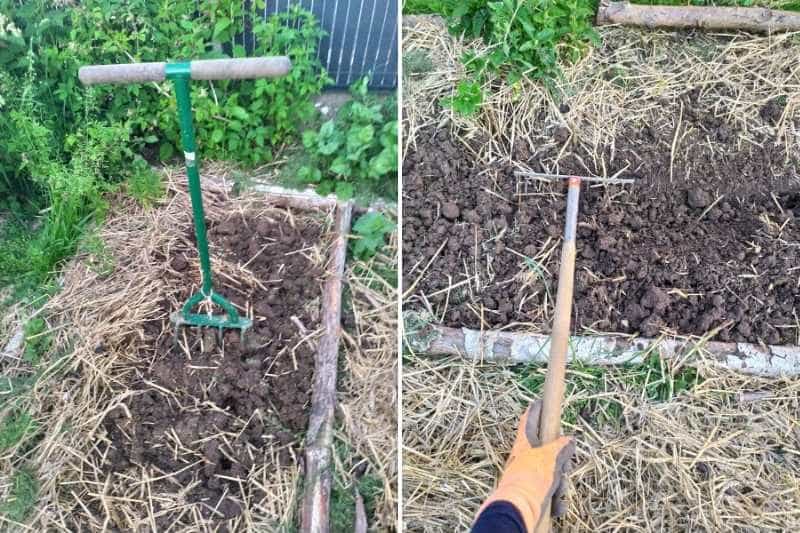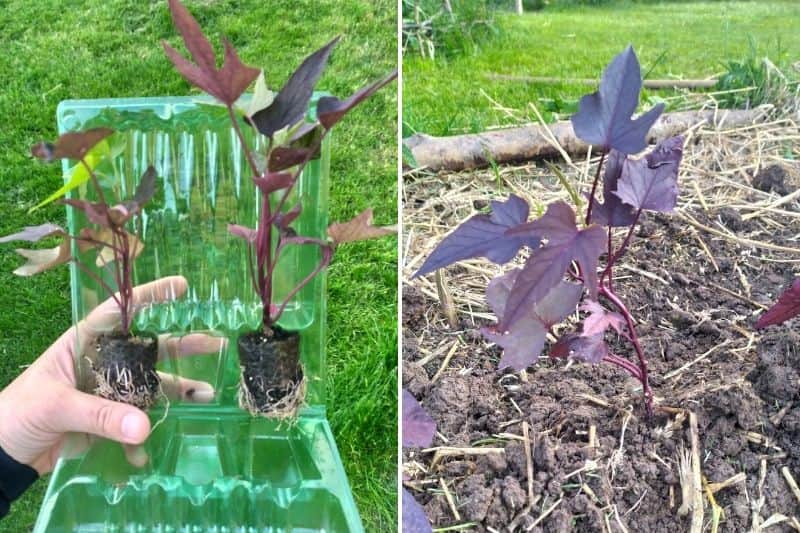The Sweet Potato, this vegetable plant cultivated for its tubercle, is becoming increasingly popular in our vegetable gardens. It also finds its way into the kitchen and lends itself willingly to many recipes, whether stir-fried, baked, or even in desserts. Why not try planting it in your garden? Although exotic, its cultivation is entirely possible in France, provided its requirements for water and warmth are respected. It is grown almost like a potato and thrives in loose, slightly sandy, and well-drained soil. Discover our step-by-step tutorial for planting sweet potato plug plants in your garden.

The sweet potato 'Murasaki 29', a new variety with fine flesh and a chestnut flavour, to cook and grow like potatoes in all regions!
When to plant sweet potato plug plants?
The sweet potato is a plant of exotic origin that is particularly sensitive to late frosts. We will plant our sweet potato plug plants from mid-May to June in open ground. It is also possible to plant the plug plants in buckets as early as April, provided they are kept in a greenhouse or a bright, ventilated room protected from the cold.
→ Find all our sweet potato plug plant varieties here.
Step 1: Choose the location
Sweet potatoes need sunlight and warmth to thrive and produce their tubercles. Choose a location bathed in light during the hottest part of the day. They also prefer a rich, loose, and well-draining soil.
Step 2: Prepare the soil
- Using a organic fork or a spade, loosen your soil. You can also add well-rotted compost to enrich your soil.
- With a rake, refine the soil and form a mound, much like for potatoes. The mound allows the soil to warm up more easily and ensures a loose soil that facilitates the development of tubercles.

Step 3: Plant your sweet potatoes
- Remove the plug plants from their recycled plastic sleeves. Check that they are moist; if not, soak the plug in room-temperature water for 15 minutes.
- Using a planting tool, such as a trowel, make 5 cm deep holes at the top of the mound, spaced 30 cm apart.
- Place your sweet potato plug plant in the hole, then backfill by lightly firming the soil to increase root contact with the soil, but without crushing the mound.
Step 4: Mulching and sweet potato care
- Apply mulch at the base of your sweet potatoes. This plant requires a lot of warmth and water to grow, and mulch helps retain soil heat while keeping the soil moist for longer.
- Water generously after planting. In the absence of rain, water once or twice a week to keep the soil consistently moist. Increase watering during heatwaves.
- The stems of sweet potatoes are creeping; you can let them run along the ground or stake them as needed.
Note: Some gardeners rebuild the mound around sweet potatoes mid-growth, as with potatoes. Personally, I leave this plant undisturbed to avoid breaking its long creeping stems and damaging the future harvest.

Mulching the sweet potato mound: Paradise Manihi and Paradise Kaukura. In the background: Japanese crozier and courgette plants.
Step 5: Harvesting sweet potatoes
- Sweet potatoes produce their tubercles at the end of the growing season. Harvest from September to November, depending on your region, when the foliage turns yellow.
- Harvest with an organic fork or a fork-spade, taking care not to damage the tubercles.
Ingrid's tip: If, like me, you live in a cold region, don’t hesitate to place a cloche over your sweet potatoes from early September to encourage tubercle development.
To go further:
- Find all our sweet potato plug plant and young plant varieties.
- Learn everything you need to know about sweet potatoes in our guide: planting, cultivation, and harvesting in the garden.

































Comments